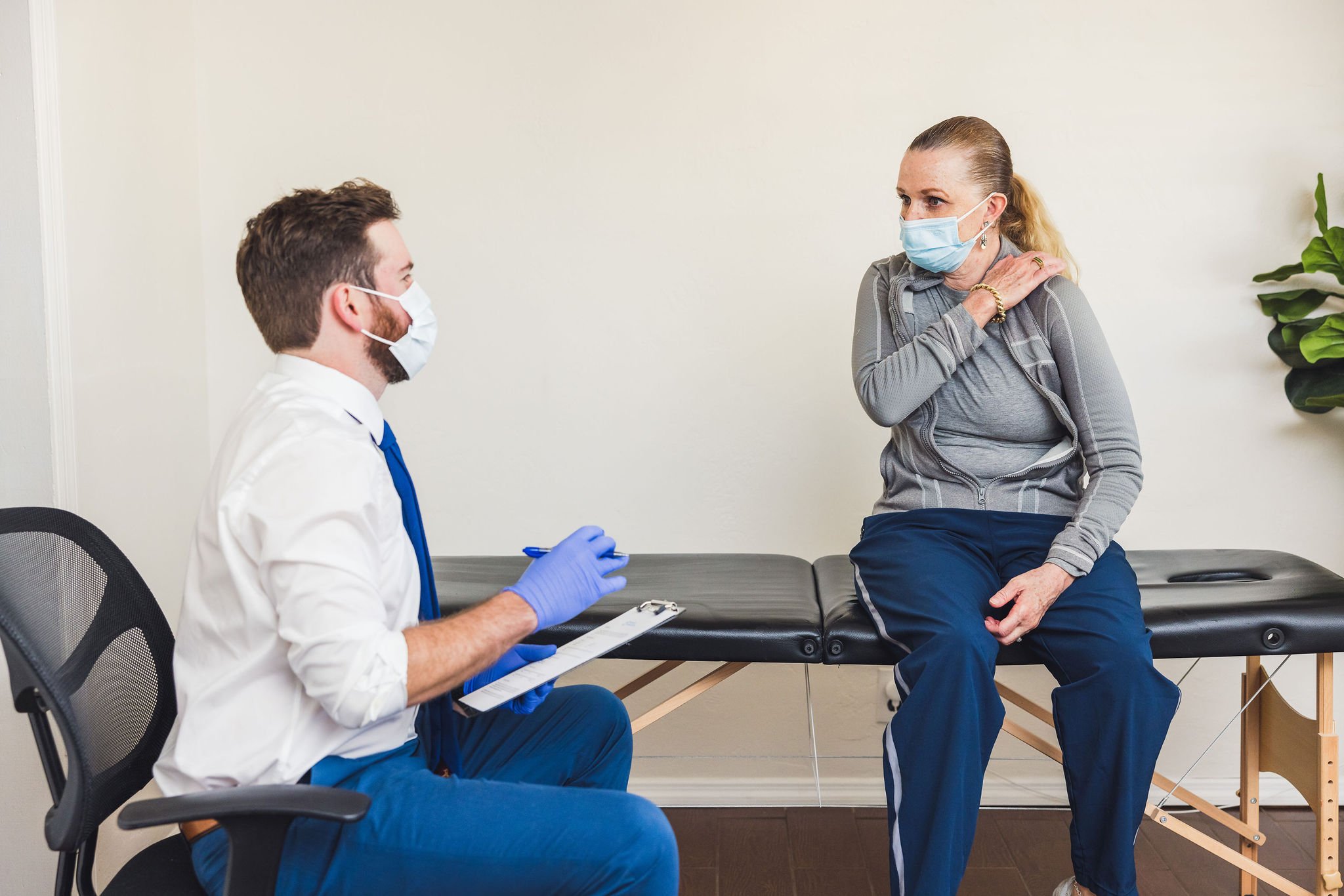
Shoulder/Scapular Pain Treatment in the Greater Phoenix Area
Serving Phoenix, Scottsdale, Tempe, Chandler, Mesa, Ahwatukee, Gilbert, and Fountain Hills
Shoulder pain affects 15 of every 1,000 people in primary care each year and will be a lifetime issue for 70% of those affected. This fact is demonstrated by 40% to 50% of patients who report persistent or recurring pain 12 months after first experiencing issues.
Pain is commonly a problem in the scapula, a large triangular bone that sits in the upper back region. Beyond issues with the scapula itself, this pain can result from problems with the shoulder's complicated series of joints and muscles. Unfortunately, shoulder pain places many limitations on what somebody can do and can lead to the inability to raise the arms, making many activities impossible. Shoulder pain can also result in difficulty sleeping because of the struggle to find a comfortable position.
Common reasons for shoulder pain
Injuries to the group of muscles and tendons that connect the shoulder joint to the scapula, called the rotator cuff, can cause shoulder pain. Tendon tears and chronic problems, like tendonitis, affect the rotator cuff.
Osteoarthritis can affect the shoulders, especially as a person ages. This condition causes the cartilage, which cushions the ends of the bones, to wear away. The bones grind against each other, leading to pain, with stiffness and an inability to move the shoulder once the condition progresses.
Injuries, including shoulder breaks and dislocations, can lead to persistent pain beyond that caused by the injury.
The overuse of muscles and tendons connected to the shoulder and rotator cuff. For example, damaging the bicep muscle can lead to shoulder pain because the affected person compensates for the damaged muscle.
Poor posture can place pressure on the shoulder, resulting in wear and tear over time.
Bursitis is a condition affecting the bursa sac in the shoulder. This sac usually protects joints by allowing fluid to move easily through the shoulder. Pain can occur if the bursa sac becomes inflamed.
Surgery vs. Physical Therapy for Shoulder Pain
Persistent shoulder pain may lead to the thought that surgery is the only option. However, this is not the case. Research suggests that physical therapy has at least the same, if not better, outcomes for shoulder pain. Furthermore, physical therapy does not carry the same risks as surgery.
Opting for surgery means that a person agrees to a risky procedure. Even the simplest of surgeries involve risks related to mistakes and infections. It’s possible that attempting to resolve shoulder pain with surgery could lead to other problems. The surgery may fail to fix the problem, leading to persistent pain.
Happily, some research shows physical therapy is at least as effective as surgery. One study, conducted in Finland, examined 173 people aged 55 or above. Each participant had a rotator cuff tear. Researchers split the participants into two groups, with one engaging solely in physical therapy while the other group underwent surgery followed by physical therapy.
The study found that a large number of the people who only engaged in physical therapy were treated successfully. What’s more, the study found no difference between the outcomes for each group 12 months after the study took place. This result suggests that taking the more conservative physical therapy approach yields the same results that engaging in both surgery and physical therapy does.
Surgery may repair the damage to the tendons and muscles, but surgery cannot fix the muscle and joint weakness that results from this damage. With physical therapy, a patient takes active steps to strengthen their body, resulting in less pain and the ability to move more freely. Patients may find that physical therapy helps manage pain better since physical therapy focuses on strengthening muscles, with surgery taking a more reparative approach.
There are other, more practical issues to consider. Surgery often carries a considerable cost, which may be prohibitive for some. By contrast, physical therapy costs less, with the cost spread over an extended period. Many may find that physical therapy places less pressure on their bank accounts.
OUR REVIEWS
Our goal is to provide supportive and effective patient care.
Many issues can lead to shoulder pain, including damage to the rotator cuff, injuries, and ongoing conditions, including osteoarthritis.
Thankfully, patients can choose a non-surgical route.
With the help of a trained Liberated Rehabilitation professional, a patient can take long-term steps to relieve their pain with a customized plan, and patients can rebuild their strength and regain shoulder function.
